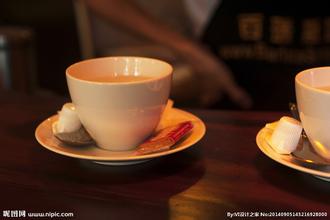Description of Flavor of g1Aricha Coffee beans by Solar Snow Flavor
Description of Flavor of g1Aricha Coffee beans by Solar Snow Flavor
Atitlan is one of the five largest volcanic coffee producing areas in Guatemala, and its soil organic matter is the most abundant among the five volcanic coffee producing areas. 90% of the traditional Atilan coffee is grown on the violent volcanic slopes of Lake Attila, where the daily breeze stirs the lake, which is an important factor affecting the microclimate of the region. The area has accumulated excellent planting and processing techniques for a long time.
[characteristics] Coffee with refreshing aroma, bright acidity and full thickness in this area has been grown entirely by small farmers since the 1950s, and now every farmer in the mountain area is a coffee production unit. This area, once the most remote and poorest part of Guatemala, is now alive and well. Rainy, cloudy, New Oriental ancient times is a volcanic area, soil volcanic metamorphic rock evolved, rich in minerals, balanced nutrition, different from other volcanic coffee producing areas.
[features] the palate is well-balanced, mellow and full-bodied, with chocolate flavor.
Summary of origin: Gedeo Zone is located 4 kilometers west of Yegashifi, planting 1950-2100 meters above sea level. Coffee from November to February of each year is sent to the Kebel Aricha coffee processing plant owned by Surafel Birhanu for processing and sale. The Ethiopian Yega Snow Coffee Aricha coffee treated by the sun comes from the Kebel Aricha producing area and is owned by Surafel Birhanu. The coffee is grown on about 650 to 700 small farms in the Gedeo district, 4km west of the town of Yega. After ripening, the coffee fruit is picked and sent to Kebel Aricha for processing, sorting and drying. Turn these coffee cherries every 2 to 3 hours in the first few days of the sun to avoid overfermentation and mold growth. According to the weather, four to six weeks later the beans were transported with parchment in Addis Ababa, processed and packed in sacks before export. The Ethiopian Yega Snow Coffee Aricha coffee treated by this tanning method is exported through the ECX Exchange (Ethiopia Commodity Exchange) system.

Important Notice :
前街咖啡 FrontStreet Coffee has moved to new addredd:
FrontStreet Coffee Address: 315,Donghua East Road,GuangZhou
Tel:020 38364473
- Prev

Introduction to the planting Environment of Coffee Bean Manor in Guatemala
The best quality coffee in Antigua is ELPulcal, which is not only of good quality, but also can be said to be quite complete, rich and amazing when compared with other Latin American coffees. if you enjoy it with chocolate, you will
- Next

Introduction of Katim Coffee Bean Flavor description Grinding scale production area
Variety introduction of Katim coffee bean flavor description grinding scale production area 1. The state-run Lujiang Farm in Baoshan City planted 12.6 mu in March 1991. The land was unshaded and irrigated once in the dry season. The level of management and fertilization was in the middle. The results in 1993 showed that the average yield per mu was 75 kg in 1993, 350 kg in 1994, 225 kg in 1995 and 225 kg in 1995.
Related
- Detailed explanation of Jadeite planting Land in Panamanian Jadeite Manor introduction to the grading system of Jadeite competitive bidding, Red bid, Green bid and Rose Summer
- Story of Coffee planting in Brenka region of Costa Rica Stonehenge Manor anaerobic heavy honey treatment of flavor mouth
- What's on the barrel of Blue Mountain Coffee beans?
- Can American coffee also pull flowers? How to use hot American style to pull out a good-looking pattern?
- Can you make a cold extract with coffee beans? What is the right proportion for cold-extracted coffee formula?
- Indonesian PWN Gold Mandrine Coffee Origin Features Flavor How to Chong? Mandolin coffee is American.
- A brief introduction to the flavor characteristics of Brazilian yellow bourbon coffee beans
- What is the effect of different water quality on the flavor of cold-extracted coffee? What kind of water is best for brewing coffee?
- Why do you think of Rose Summer whenever you mention Panamanian coffee?
- Introduction to the characteristics of authentic blue mountain coffee bean producing areas? What is the CIB Coffee Authority in Jamaica?

